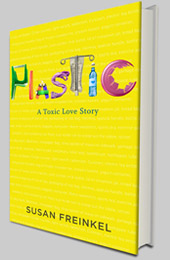The plastics industry has been touting a recent study by German researchers that concluded that the chemical bisphenol A is safe. Written by an advisory committee to the German Society of Toxicology, the report was based on a review of more than 5,000 studies, and defenders of the controversial chemical have proclaimed it final evidence that health concerns over BPA are unwarranted.
Now the Milwaukee Journal-Sentinel, which has been following the BPA story for years, has a story describing how four of the authors of that study have ties to the companies and groups that benefit from bisphenol A — some of which were disclosed with the research report. One of the authors is an employee of Bayer Schering Pharma AG, the largest producer of bisphenol A, or BPA, in Europe; another has in the past received funding from the industry group, BPA Global. And, according to the Journal-Sentinel, “another runs a ‘consultancy for industry,’ while the fourth calls himself a ‘leading toxicologist in the chemical and pharmaceutical industry’ who is currently ‘developing and shaping’ toxicology in Germany and Europe.”
BPA, you may recall, is a chemical used in the hard clear plastic polycarbonate, as well as in the epoxy resin used to line tin cans. It is thought to be a weak estrogen mimic, and trace levels can be found in the urine of nearly all Americans. Studies have linked it to heart disease, diabetes, obesity, breast and prostate cancer and other health conditions.
The Journal-Sentinel interviewed Jan Hengstler, the lead author of the review, who did not report any conflict of interest. He said his nine-person committee did not receive funding for the work. Hengstler, a researcher at the University of Dortmund, said the committee was drawn from elected members of Germany’s national association of toxicologists, and included representatives from academia, industry and government “in order to guarantee a broad range of toxicological competence.” “After careful consideration,” Hengstler told the Journal-Sentinel, ” we came to the conclusion that the recent governmental responses of some countries do not have a scientific basis but are politically motivated.”
Prominent American BPA researchers have blasted the review report. The newspaper quotes Pete Myers, CEO and chief scientist of Environmental Health Science, a nonprofit environmental group, as saying, the report is “rife with scientific errors and misrepresentations, and it ignores or dismisses some of the best science available to date on BPA’s effects.” I heard the same when I contacted Patricia Hunt, a researcher at Washington State University, who has done research on BPA’s impact on the mammary cells of mice, who said “there is so much here [in the German paper] that is problematic.”
The Journal-Sentinel also talked with Sarah Vogel, a science historian and researcher with the Johnson Family Foundation, who has written on the history and politics of the BPA controversy. I’ve also talked to Vogel in the past and found her a very useful source for putting some of this scientific controversy into context.
Vogel told the newspaper that while she would like to see a review conducted by researchers without any financial ties to industry, she was reluctant to say the report’s conclusions were entirely industry-influenced. Instead, she thought that the German toxicologists’ conclusions were less a reflection of industry influence than a reflection of “a shared disciplinary background and a shared way of thinking…She said there’s a deep rift between the scientific disciplines of toxicology and endocrinology, hinging on the theory that some chemicals – including bisphenol A – may behave more like hormones than traditional toxins, and therefore may affect health and development at very low concentrations. Toxicologists don’t believe that theory. Endocrinologists do.”



